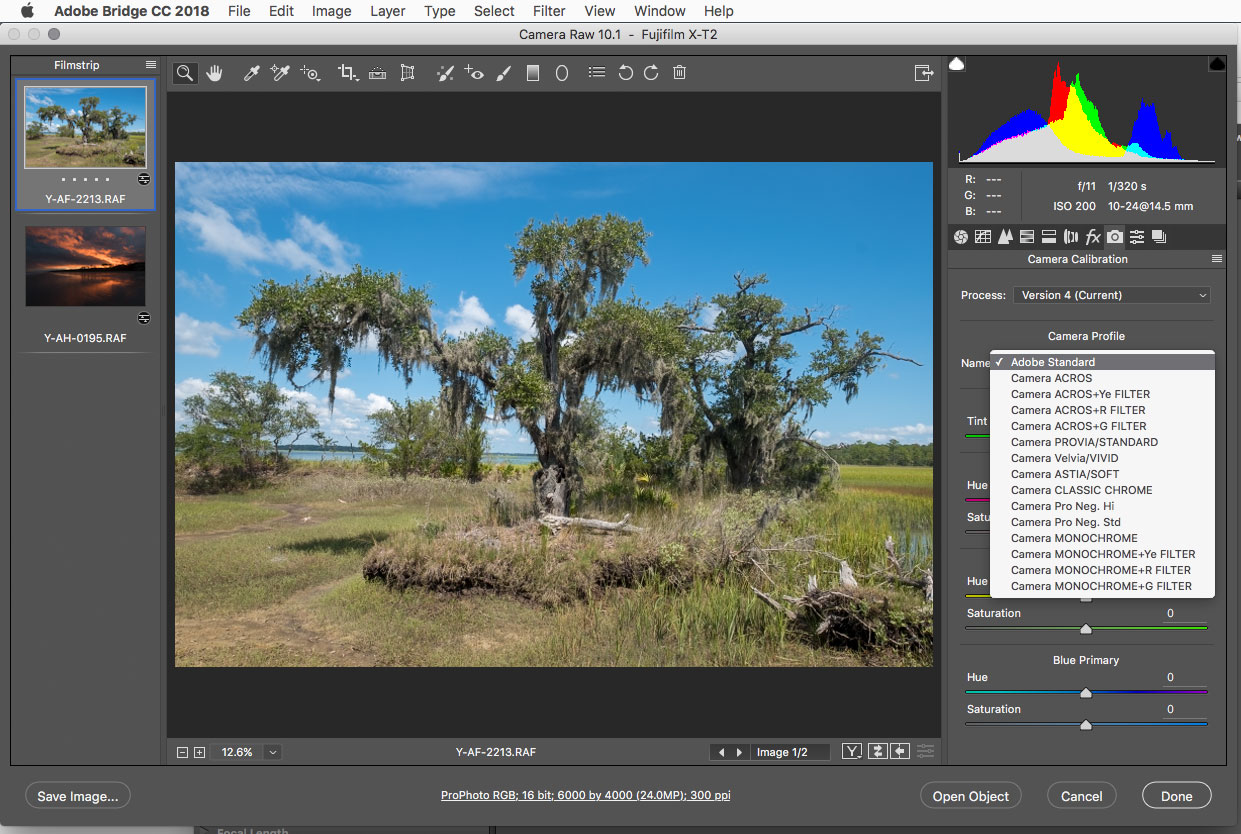

- #Adobe camera raw fuji x100 how to#
- #Adobe camera raw fuji x100 pro#
- #Adobe camera raw fuji x100 software#
- #Adobe camera raw fuji x100 iso#
I take in RAW only (for reasons of the ability to do adjustments in PP that I cannot do if I took jpeg). I'm sure that after a couple of weeks, I'll have have a very good understanding of which Jpeg settings to use for which situations. I've had quite a bit of fun experimenting with the multitude of settings.
#Adobe camera raw fuji x100 iso#
Also, there is film simulation bracketing, DR bracketing, and ISO bracketing.

The greatest part of it all is that one has the choice of using the in-camera RAW processing to adjust almost any of the above if necessary, including pushing or pulling of the file. The myriad of choices one has when shooting jpeg allows one to fine tune the output to the situation.you have the DR settings, film simulations, highlight and shadow contrast adjustments, noise and sharpness settings. I've been shooting with RAW + jpeg, and while I've processed some raws with ACR, I find more often than not that the Jpegs look just as good (and often better, at least color wise).
#Adobe camera raw fuji x100 pro#
I've had both the S3 and S5 pro cameras, a few of the 1D incarnations, both the 5D and 5D2, and a D3s.oh and a leica M8 and a Sigma DP1.The colors and detail rendering of the X100 jpegs beats them all IMO. Having had the X100 for a few days now, I feel fairly confident saying that the X100 has the best Jpeg files I've seen to date. However, with the boldness RAW inspires, you will probably push the edge much farther in your shooting, but the time in processing will be well rewarded with exciting images. As your eye and skills increase, RAW processing speed can as well. If you are into photography, then RAW is the choice. If you are only concerned with speed, then shoot JPEGs. I wonder if this ability will also be one of X100 ultimate strengths. This allowed for a much simpler and faster workflow and often negated the need to shoot RAW.
#Adobe camera raw fuji x100 how to#
Fuji certainly knows how to deliver great OOC jpgs. I ask these questions because many years ago I used an S5 Pro and the jpgs were outstanding. With RAW you can make your images scream far more garishly than the Velvia setting, or be gentle and subtle-and anything in between. However, it is much better to simply produce the ultimate image from the exposure than to try to emulate some arbitrary settings. With the very fine control RAW provides, I suppose you could. Have you been able to duplicate Fuji's film simulations?
#Adobe camera raw fuji x100 software#
Software has been improving since the beginning of RAW, so you will be able to revisit your RAW shots in the future, and draw even more out of them. JPEGs will give you immediate gratification while you develop your eyes and your skills. So, yes, converting to JPEGs depends upon your skill-level and the goals you wish to achieve. Even when shooting under terrible conditions, the final image looks effortless. I have complete control of dynamic range, contrast, saturation, clarity, vibrance, fill-light and highlight recovery, sharpness, curves and even individual colours on an area by area basis. If most of the scene is ideally lit, but someone happens to be standing in a darker area, I can boost the exposure there, and again use layers and layer masks to blend them into the picture as fully balanced with the rest of the subjects. Using Photoshop's easy layers masks, I can shoot under mixed light and apply several white balances-one or more for each light source-then blend them together once stacked as layers. I can precisely dial in what I want to see, but it goes way beyond that. Camera settings are rather broad, while settings applied to the data in a RAW file are very fine. Thus when you process a RAW file prior to opening it, you have great control of every aspect of the image. What is contained in the RAW file may vary from camera maker to camera maker. It is a container that holds the raw data, preview, EXIF data along with camera specific data that the RAW processing program can access.

RAW is not actually an image file format such as JPEG or TIFF. It has an embedded preview which is in fact a JPEG, but that is just a preview. RAW does not respond to camera settings-it truly is the raw data off the sensor. And, yes the X100 does produce very nice JPEG quality.ĭo RAW files easily convert to quality jpgs or is much more processing required? My question is directed to those who have shot RAW and jpegs and compared the two.ĭuring the first few weeks, I shot RAW+JPEGs, but since Adobe Camera RAW6.4 became available, have shot RAW exclusively. So far, the out of camera (OOC) jpegs look very good. I have not been able to access Fuji X100 raw files (waiting for an Aperture update).


 0 kommentar(er)
0 kommentar(er)
